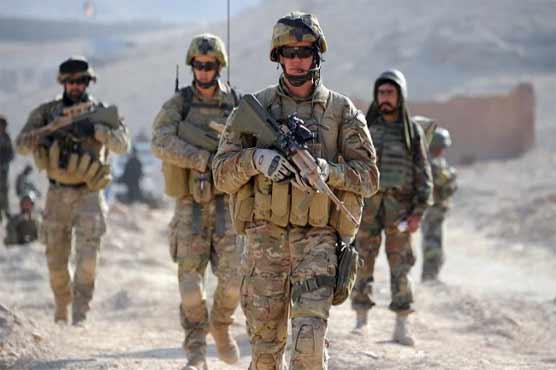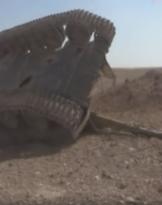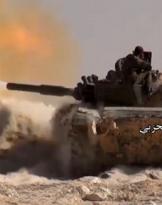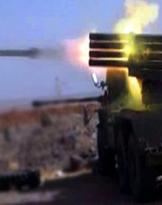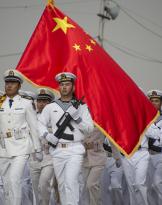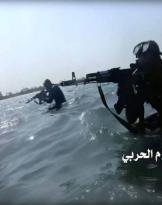The Yemeni war becomes more cruel every day. According to the alarm of the Red Cross, from the 27 April to today, 115 would be the dead confirmed for cholera and about 8500 the cases registered in the hospitals (those remaining) of the country. The humanitarian emergency following the invasion of the Saudi-led Coalition of the 2015 would now be out of control.
As is usual, the Western media does not report news from Yemen, but in the southern part of the Arabian Peninsula the war continues in a dirty way.
For two years, on this column, we have scanned the Saudi military overthrows and their allies and the impasse situation that ensued. Added to this is the breaking of the Sunni front that sees former allies against the rebels Houthi, fight each other (read article).
To get out of the Arab "Vietnam" into which they have been driven, the Saudis have been considering for months the idea of taking Western Yemen out of hunger.
All the food and material supplies of the rebels pass by the port of Hudaydah, stronghold Houthi halfway between the Saudi border and the southern entrance of the Red Sea. Even before the war, the 70% of Yemeni imports were passing through the important seaport, from which Iranian military aid to the Shiite cause also passes today.
The port of Hudaydah has become essential since Mocha, located 180 km further south, has been occupied by militias al-Ḥirāk al-Janūbiyy, allies of the Sunni Coalition. Its fall into the hands of the Coalition would starve the capital Sana'a and the whole of western Yemen. Millions of people would fall into an apocalyptic humanitarian emergency. The alarm also reaches the UN which, however, remains difficult to shake over the Yemeni disaster.
A massive attack to occupy the city would have been foreseen by the Coalition staff for some time. Yemeni sources speak of two brigades of the National Army, loyal to the Sunni Hadi, lined up in the area of Mocha and at least one Saudi armored brigade ready from the northern border.
While the aerial persecution continues on Hudaydah (which counts half a million inhabitants), the ground attack however is constantly postponed.
One wonders: are the Saudis able to take Hudaydah?
The answer is no.
On the military difficulties of Riyadh in Yemen we have already spoken in abundance. The image of a paper tiger whose deposits overflow with sophisticated weapons without sufficient personnel trained to use them is already widely shared.
The point then moves to the political level. Saudi pressure on the new US administration for greater US involvement in Yemen has started since the Trump settlement. Although Riad had focused on excellent relations with Hillary Clinton's staff, the position that the American president has taken on Iran has fueled Riad's hopes.
Inspired by Tel Aviv, Trump would have moved the cards throughout the Middle East (particularly in Syria), precisely to stem the one that is openly considered "the Iranian threat".
Music for Saudi ears that have begun to wait for fruit also on the Yemeni front. For the moment, the White House has released 350 millions of dollars in military orders. We will see what will be added after Trump's round of visits to the Gulf these days ...
"What to do in Yemen" 22 March (Chicago Tribune, 26 March).
The Secretary of Defense Mattis has niche on the use of ground forces, but has reiterated a wider American involvement in the area with decision-making power left to the regional commander (general Votel head of CENTCOM, competent for the Middle East).
It's just the beginning. An explicit request of the United Arab Emirates (appreciated by Mattis), would like the long-awaited attack on Hudaydah to be supported by ships of the Fifth Fleet which would guarantee air support and bombardment from the sea of stations Houthi. The plan also speaks of special land operations, necessary for the supply of coordinates and essential data to the allies of the Arab Coalition.
The American role in the area in this case would shift from the publicized war on terrorism to AQAP (Al Qaeda in the Arabian Peninsula) to a direct attack on the militias Houthi and in fact at an entrance into the civil war.
It wouldn't be a debut. The 13 October the US Navy responded to an alleged missile attack by bombing rebel radar stations on the Red Sea coast. The debate within the Pentagon about an escalation is on: everything depends on the strength of the Congress between the anti-Iranian and the non-interventionist party.
Confirmation that the United States already has boots on the ground in Yemen the 28 came in January when a Seal the United States Naval Special Warfare Development Group he had been killed (and three others wounded) during a raid in Al Baida, officially to neutralize an Al Qaeda cell.
The Pentagon had commented on the facts talking about dozens of air strikes conducted with fighters and drones to hit the growing terrorist threat in Yemen. 
On the role of Al Qaeda in the Arabian Peninsula one could argue at length. The terrorists of AQAP (responsible for the attacks in Paris ...) are indirectly included in the great Sunni coalition that fights the militia Houthi. Although Saudi Arabia distances itself, in reality it shares the same military objectives.
Il no sense of Washington in Yemen is just that: why fight Al Qaeda when in reality we try to neutralize their enemies?
In light of the Arab plans to attack the stronghold Houthi Hudaydah, how does the war fit in Al Qaeda?
The presence of AQAP in the Arab country it has increased in step with the loss of hold on the territory of the Hadi government. American drone raids have multiplied in recent weeks and US involvement has spiraled.
That this is the prelude to a direct intervention aimed at "stabilizing the country" is a rumor that has been running in Washington since Trump took office. The problem is to understand who the Americans are going to fight against. The rebels Houthi as requested by Riad and Abu Dhabi or Al Qaeda of which the pro-Iranian Shiites are enemies?
In April 2016, the amphibious assault ship USS Boxer had released in Yemen the Fighting 13th, the 13a Marines Expedition Unit. According to the Pentagon, the unit was intended to ensure "airborne intelligence, reconnaissance, advice and assistance with operational planning, maritime interdiction and security operations ".
The Saudi governmental news agency had mentioned the same episode talking about "Saudi and Emirates forces, flanked by the American contingent engaged in operations against Al Qaeda".
The reality overcomes the analysis: US ground forces in Yemen have existed for more than a year and have access "in and out"In the country to carry out military actions. The entrance is not only from the sea but also from the large sand reservoir that is Saudi Arabia, where the American military presence counts 12 well bases. For example, Khamis Mushayt of the U.S. Air Force is 70 km from the border with Yemen ...
The big comings and goings in the Arabian Peninsula are joined by the hundreds of mercenaries with US mediation for a real delegated war. According to New York Times (November 2015) two years ago 450 were the soldiers of fortune from Colombian, Honduran, Chilean, Panamanian and Mexican special forces, recruited by Erik Prince (founder of Blackwater) and sent via Emirati to fight in Yemen. The training, taken care of by the US at the time of employment at home against FARC - or against the narcos, it was a perfect credential.
Against the Houthi, alongside the Arab Coalition there is a real international army. Since March, 2017 has also provided for the deployment of Pakistani soldiers in support of the Saudi National Guard ...
While Yemen is inflamed in secular tribal logic, the US is talking about greater involvement. On their actual role and on the near future of the area, the debate is open.

(photo: PressTV - US DoD)

